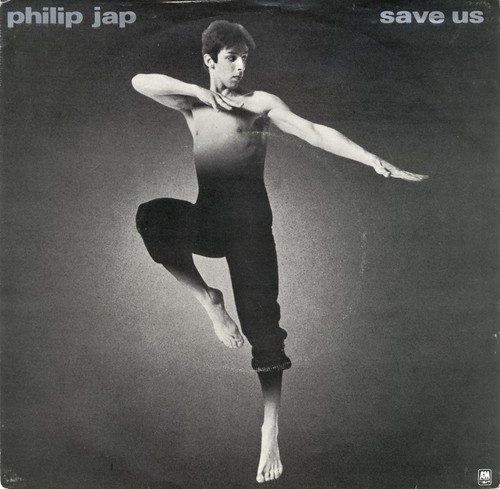
Philip Jap came from a time when mime, dance, slapped bass lines, mascara and techno-dystopic anthems were staple parts of a successful popular music career. Cut from the same new wave goth cloth as Gary Numan, Human League and John Foxx, sporting mesmeric dance moves like a male Kate Bush, Jap lit up the early 1980s with performances on the David Essex Showcase, an audience participation talent show similar to today’s Britain’s Got Talent or Pop Idol. Jap went on to sign for Carlin Music Publishing and A&M Records, release an eponymous solo album and have a top 40 hit with ‘Save Us,’ a dramatic plea for liberation from an increasingly intrusive ‘mechanical world.’
Jap retains a modest yet loyal fanbase (The Philip Jap Army), and his recordings will soon be made available through his twitter site. Although he did not have runaway commercial chart success, Jap went on to have a successful career as a composer and arranger for TV series and commercials and is the co-founder of AUDIOfield, a music production company.
The Greatbear studio has been graced with Jap’s music this week because we have been migrating a collection of low-band U-matic videos that feature a number of TV appearances and promotional videos, including the 30 minute ‘special’ that was recorded for the BBC. In similar fashion to our recent transfer of Manchester Oi! band State Victims, the tapes were found in an old suitcase in a barn!
Although the tapes were mostly in good condition, some of the tapes were recorded on early SONY brand and were suffering from low Radio Frequency (RF) levels. RF levels are the recorded levels that can be read off the tape itself. To get a good, clear picture it is essential that the RF levels are strong. According to the AV Artifact Atlas, RF deterioration can occur because of a ‘poorly made recording on broken or mis-calibrated machine/record heads, or the use of poor quality video tape stock.’ Low RF levels may also occur if ‘the source media itself has been exposed to a strong magnetic field (unshielded speakers, motors, high-voltage transformers, etc.)’.
When a tape is suffering from low RF levels there are not loads of things you can do to reverse the process. This is because the signal recorded on the tape has essentially faded over time, due to a bad initial recording, unsuitable storage conditions leading to de-magnetisation or sticky shed, or poor quality tape (such as AMPEX or SONY U-matic tapes, although not exclusively). It is possible however to modify the tracking, a calibration adjustment which ensures the spinning playback head is properly aligned with the helical scan signal written onto the video tape. Tracking changes the speed at which the tape moves past the tape heads, which although spinning during playback, remain stationary. It is not the answer of all low RF ills, however, because the signal on the tape itself has become weaker, even if the calibration adjustment helps the machine read the signal more effectively.
Thankfully the tapes play back well, which is pretty amazing given that the tapes are over 30 years old and were never meant to be archive copies in the first place. We have also had a pretty enjoyable time watching and listening to Philip Jap’s amazing music. It is definitely time for a revival!
Hi there! Did anything come of this venture? Do you know if the tapes have been made available in any form?
I ask because I’ve discovered an obscure clip of a Philip Jap video from 1981, and it doesn’t appear to be any of his known singles or off of his album. I’m trying to track it down and I have a sneaking suspicion it was in that suitcase somewhere. 😉
Have the Philip Jap tapes been restored? Been interested